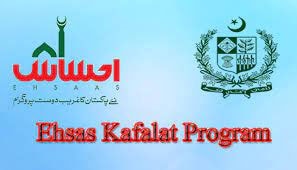Staff Reporter Lahore
Under the modern welfare state concept, a state is like a mother for its citizens, which takes care of all their needs.
And any government that reflects on the concept of a welfare state can be true representative of the public.
Pakistan Tehreek-e-Insaf government is the first government in the history of the country that has taken such measures which are reflective of a mother’s love and care for its children, and Ehsaas initiative stands atop the long list.
In the fiscal year 2021-22, the PTI federal government has increased allocations for the Ehsaas programme from Rs210 billion to Rs260 billion, which is 24 per cent higher than the previous year.
There is no denying the fact that the initiative is helping a great deal in ending poverty in the country by supporting the destitute strata, and providing various relief packages through coordinated efforts, amid the coronavirus pandemic.
The low-income strata of the country had been waiting for such relief-incentives for the last 74 years, as they had always been deprived of basic needs of life: food, shelter, health and works facilities.
The International Labour Organisation (ILO), in its recent report, compiled by the UN Labour Affairs experts, revealed that the global economic crisis, caused by the COVID-19 pandemic, is likely to contribute to global unemployment of more than 200 million people by 2022. The report revealed that woman and youth labourers were the worst affected of the crisis.
However, the Pakistan government initiatives, especially for the low-income strata including the labour class, women and youth, have won praise across the world since the outbreak of the pandemic.
Coming up to the expectations of such segments of society once again, the federal government not only continued these initiatives but also increased budgetary allocations for the Ehsaas programme.
The federal budget 2021-22 was unveiled on June 11. A cursory look on it showed that the government focus was, once again, on provision of jobs to the employed people, uplift of the marginalized segments of the country and ensuring sustainable economic growth through provision of incentives to various sectors including industry, agriculture and housing.










